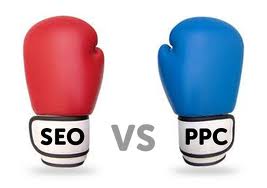Think back to the last time you made an online purchase. Chances are, you started the research process on one device and ended up making the purchase from another. A large number of users begin a transaction on one device and complete it on another. This, very simply, is cross-device conversion.
Because users feel comfortable moving between devices it is important for businesses to be able to measure and, more importantly, act on this behaviour. Designing apps and sites that facilitate cross-device conversions is the first step, but how do you optimise for such conversions?
Here are a few tips:
How to Optimise for Cross-Device Conversions
1. Monitor Your Cross-Device Conversions
Conversion tracking allows you to manage and monitor your PPC campaign’s conversion and, as of 2015, this is available for cross-device conversions. Enabling this on your account will let you see important data on the conversions of multi-device users.
It is also important to enable the same conversion tracking settings across your platforms (desktop sites, mobile sites, and apps). Conversion tracking gives you information on what customers do after they click on your ads, so uniform tracking will give you will have better understanding of which users are transferring to different devices after said clicks.
Lastly, it will benefit you to take advantage of Google’s expanded conversion window. A conversion window is the amount of time between a customer clicking an ad and Google reporting a conversion to you. By lengthening this window, you give customers more time to transact via multiple devices. And, since multi-device users tend to take longer to convert, you allow yourself a better understanding of the data surrounding these conversions.
2. Single Out the Insights You Need
March saw the beginning of a rollout in which Google will include cross-device conversions in the ‘Conversions’ column. But, while this will contribute to the overall conversions on Insights, you will still be able to view data on cross-device conversions separately. Viewing these insights separately will allow you to specifically target cross-device conversions using automated bidding.
It is also possible to view the conversion rate on individual devices. This makes it possible to define which approaches are preferred for each device.
3. Adjust Your Strategy to Maximise Cross-Device Conversions
It is worth noting that users are more likely to complete transactions if the path to completion is clear and easy. So, you want to make cross-device conversions just as easy as same-device purchases in order to increase your revenue.
With this in mind, use the information in your ‘Conversions’ column to rethink your Google AdWords bids. This way your strategy will be aimed at boosting cross-device conversions and you will be tailoring the journey to the multi-device user.
Tracking cross device conversions on Facebook
Conclusion – Cross-Device Conversions Help You Land More Customers
With so many devices on the market nowadays, users are branching out when it comes to online purchasing. Device mobility allows a fluidity that really suits many users’ lifestyles, so companies that adapt to and facilitate this have a better chance of winning those users’ business.
With cross-device conversions becoming increasingly popular, now is the time to optimise your ad campaigns to suit them.
For help with your digital marketing campaigns, whether that’s Google Ads, Search Engine Optimisation (SEO), Facebook, LinkedIn, or Social Media, or if you are looking for a professional landing page design agency, get in touch with us today. Or, view all our services here.
Flow20 now also offers training for Facebook ads and training for Instagram ads.





